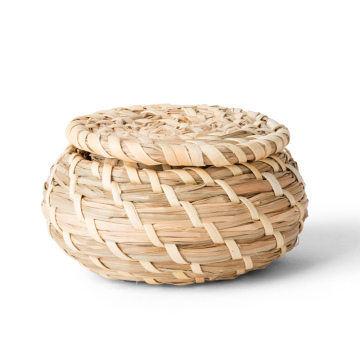From Sea to Table: The Ultimate Sushi Adventure
The History of Sushi: A Culinary Journey
The culinary tradition of sushi boasts a rich and intricate history that dates back to ancient times, originating in Southeast Asia. Sushi's roots can be traced to the practice of fermenting fish, which was a method of preservation that allowed communities to store seafood for extended periods. This process involved packing fish tightly with rice and salt, enabling it to be consumed later. As this technique spread into Japan, it evolved into what is now recognized as sushi.
In Japan, the transformation of sushi began around the 8th century, with the introduction of narezushi, a variant where fermented fish was served with rice. This early form saw the gradual transition to more accessible styles, laying the groundwork for the popularity of sushi as we know it today. By the Edo period (1603-1868), sushi underwent significant changes, particularly with the development of nigiri sushi. This style involved hand-formed rice combined with fresh fish, offering a quick and flavorful option that was well-suited to the fast-paced lifestyle of urban dwellers in cities like Tokyo.
The introduction of various styles such as maki (rolls) and sashimi (sliced fish) further diversified the sushi culinary landscape, influenced by regional ingredients and local tastes. These sushi variations reflect the intertwining of cultural elements, showcasing the importance of seasonal availability and the artistry of presentation. Over the years, sushi has gained immense popularity beyond Japan, evolving into various adaptations to cater to diverse palates worldwide.
Today, sushi is an integral part of global cuisine, with countless establishments dedicated to serving this delicacy. The fusion of traditional methods with modern interpretations continues to captivate food lovers, further solidifying sushi's status as not only a meal but a culinary experience that resonates with people of all cultures.
The Art of Sushi Preparation: Techniques and Ingredients
Sushi preparation is a delicate and intricate art that combines various techniques and high-quality ingredients to create a culinary experience that delights the senses. The foundation of sushi lies in its rice, known as 'shari.' Cooking sushi rice requires precision and skill, as it must be perfectly seasoned with a mixture of rice vinegar, sugar, and salt, ensuring a balanced flavor profile that complements the other components. The rice should be sticky yet fluffy, allowing it to bind together while maintaining the correct texture.
Fish selection is paramount in sushi preparation. Freshness is crucial, as sushi relies heavily on the quality of the fish. Chefs often choose varieties such as tuna, salmon, and mackerel, which provide distinct flavors and textures. The slicing technique used to prepare the fish is equally important. A sharp knife, or 'hocho,' is essential for achieving clean, precise cuts that enhance the visual presentation and mouthfeel of the sushi. The fish can be prepared in various styles, such as sashimi, where it is served raw, or nigiri, where it is placed atop a molded portion of rice.
Rolling sushi presents another set of skills for the aspiring chef. The use of a bamboo mat, known as 'makisu,' enables the creation of rolled sushi or 'makis.' This technique requires practice to ensure an even distribution of fillings such as vegetables, fish, and condiments like avocado or cucumber. While traditional rolls, such as California rolls, are popular, creativity in sushi preparation has led to a variety of innovative concoctions using unique ingredients. Additionally, essential condiments like soy sauce, pickled ginger, and wasabi play a vital role in enhancing the overall flavor experience.
In summary, mastering the art of sushi preparation involves understanding the techniques and selecting the finest ingredients. Whether in a professional kitchen or at home, the fusion of skill and quality is what ultimately elevates sushi to an unparalleled culinary delight.
Sustainable Sushi: Choosing Eco-Friendly Options
The increasing global demand for sushi has brought to light the pressing issue of sustainability within the seafood industry. Unsustainable fishing practices, particularly overfishing, have a significant impact on marine ecosystems, jeopardizing fish populations and their habitats. Consequently, it is essential for consumers to become more discerning when selecting sushi options, promoting a more environmentally-friendly approach.
One effective way to support sustainability in sushi is to seek out seafood that has been certified by recognized organizations, such as the Marine Stewardship Council (MSC). The MSC certification signifies that the seafood was sourced from fisheries that demonstrate environmentally-responsible practices and allow fish populations to thrive. When dining out or purchasing sushi from a grocery store, look for this label to ensure you are making an eco-conscious choice.
Additionally, consumers can opt for sushi made from fish species that are known to be more sustainable. For example, fish such as mackerel and sardines typically have higher reproduction rates and are considered less at risk of being overfished compared to tuna or salmon. Moreover, embracing plant-based sushi options, which incorporate vegetables, fruits, and grains, can significantly reduce reliance on seafood and lessen environmental impact.
When visiting sushi restaurants, consider asking the staff about their sourcing practices. Establishments that prioritize sustainable seafood options often take pride in informing their customers about where their ingredients are sourced and their commitment to environmental responsibility. Some restaurants may even display their certifications publicly, making it easier for consumers to make informed choices.
Engaging in sustainable sushi practices not only supports the health of our oceans but also contributes to the preservation of culinary traditions for future generations. Through conscious selection and advocacy, consumers can greatly influence the landscape of the sushi industry toward a more sustainable future.
Embarking on Your Sushi Adventure: Tips for Enthusiasts
For those eager to explore the diverse culinary art of sushi, embarking on a sushi adventure can be a delightful culinary experience. Whether one chooses to dine at a traditional sushi restaurant or attempt to recreate these dishes at home, understanding the nuances of sushi culture can significantly enhance the experience. First and foremost, familiarize yourself with proper etiquette. When dining out, it is polite to greet the sushi chef, or itamae, and observe any local customs, such as the use of chopsticks versus hands. In Japan, sushi is often enjoyed without soy sauce, allowing the natural flavors of the ingredients to shine, so consider refraining from pouring too much sauce on your sushi.
Another key aspect to consider is drink pairing. Sake is the traditional beverage often enjoyed with sushi, but it is essential to choose the right type. Light and fruity sakes pair well with delicate nigiri, while fuller-bodied sakes complement heavier rolls. For those who prefer non-alcoholic options, green tea serves as a flavorful accompaniment that enhances the overall dining culinary experience. These pairings can elevate your meal, allowing for a more comprehensive appreciation of the sushi flavors.
Additionally, for home chefs interested in crafting their sushi, taking a sushi-making class can prove to be invaluable. These classes not only teach fundamental techniques, such as rice preparation and fish selection but also provide insights into the aesthetic presentation of sushi. Several culinary schools and local chefs offer workshops, catering to all skill levels, and are an excellent way to connect with fellow sushi enthusiasts.
Ultimately, by observing proper etiquette, experimenting with drink pairings, and honing your sushi-making skills, you can fully embrace the world of sushi and enrich your culinary journey.











